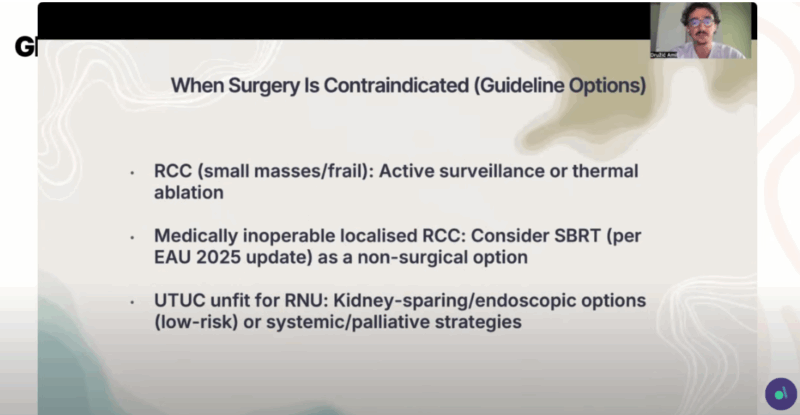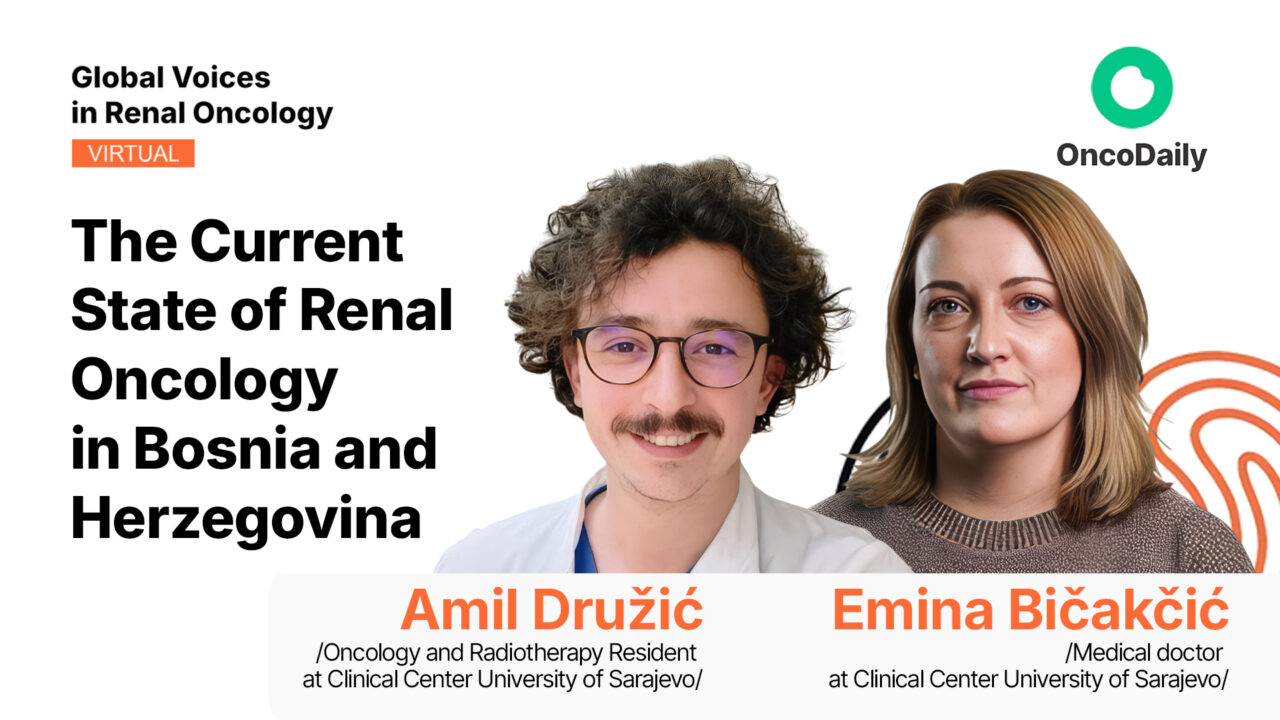At Global Voices in Renal Oncology (VIRO) 2025, organized by OncoDaily, Dr. Amil Družić, Oncology and Radiotherapy Resident at the Clinical Center University of Sarajevo, and Dr. Emina Bičakčić, Medical Doctor at the Clinical Center University of Sarajevo, delivered a joint talk on “The Current State of Renal Oncology in Bosnia and Herzegovina.”
Dr. Emina Bičakčić highlighted statistics on the epidemiology of new cases, deaths, and the number of prevalent cases in Bosnia and Herzegovina. She noted that for diagnosis the NCCN guidelines are used and emphasized the multidisciplinary nature of treatment, which depends on the stage of disease and may include surgery, radiotherapy, and systemic treatments. She underlined the importance of immune checkpoint inhibitors and other expensive therapies, expressing concern about their limited availability and hope that they will become accessible throughout the country, as this remains a key difference between Bosnia and Herzegovina and other EU countries.

She also mentioned that the Ministry of Health currently includes 150 drugs on its list, with five new drugs expected in 2026. In addition, she highlighted cooperation in clinical trials with medical centers in Croatia, Serbia, and North Macedonia, and stressed the role of high-quality supportive care in their clinical practice.
Dr. Amil Družić focused on the role of European and international guidelines in the treatment of kidney cancer, with particular attention to the selective role and opportunities of radiotherapy. He explained that radiotherapy, while traditionally limited in kidney cancer due to the tumor’s relative radioresistance, has a well-defined place in specific clinical situations.

These include post-operative treatment for patients with lymph node–positive disease, as well as palliative treatment for metastases involving the bone, brain, and soft tissues, where radiotherapy can provide significant symptom relief and improve quality of life. Dr. Družić also highlighted the evolving role of modern radiotherapy techniques such as stereotactic body radiotherapy (SBRT), which allow for precise high-dose delivery to metastatic lesions with minimal damage to surrounding tissues. He emphasized that SBRT opens new opportunities for better local control and potentially improved outcomes in selected patients with oligometastatic disease.
Join us in the conversation.


